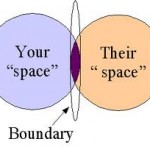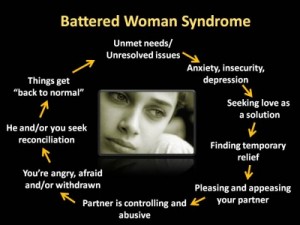The Angry Attitude
You probably know it well, whether it’s your angry attitude or someone else’s. It’s like a bee’s nest inside, that just won’t stop buzzing.
And you want to sting somebody else…to ease the stinging inside you. And usually, it’s the people closest to you–in your home, at work, or on the freeway.

Here are some of the thoughts that indicate an angry attitude:
- I can’t believe they just don’t get it. How can they be so stupid, blind, etc.
- I just can’t stand it any more.
- It’s got to stop, and I’m secretly scared of what I’m going to do.
- I don’t want to hurt anyone, but I don’t know how to stop.
Whether you’re willing to admit or not–even to yourself–you feel like a victim. You’re a victim to all of those people who just don’t get it.
Or maybe you feel like a victim to your own anger. One way or another, you just aren’t going to put up with it any more.
The Emotion of Anger
Anger is the emotion of self-preservation of your worth, needs, and convictions. So anger can be both good and bad. It depends upon how we manage it. Anger does not arise in a vacuum. We have basic psychological needs that ahve to be adequately met if we are to enjoy emotional balance. When these needs are met we experience the emotions of distress, including anger. Persistent problems with anger imply unresolved psychologcial needs.
Going Deeper
Opening the lines of communication between ourselves and the people we connect with is challenging – even when things are going well. Given our current workloads and personal stress, sometimes maintaining those open lines doesn’t seem possible – or worth the trouble involved. When this happens, we begin to miss opportunities to identify issues and improve the way we work together.
In this section I will be discussing approaches to defuse anger and defensiveness (in yourself and others) and new perspectives from which to resolve difficult issues which are concerning you.
Anger and the Body’s Response
The Trigger Phase One
Any threatening event that causes initial arousal is referred to as a “trigger”. Examples of possible triggers are if someone yells at you unexpectedly, if you receive some shocking news, or if you think about a situation that upsets you. Thus, triggers can be caused by external events or internally through your memory and perceptions. At the point that you are “triggered”, you body starts to physiologically prepare itself. You become more mentally alert and prepared to deal with the potential conflict.
The Escalation Phase Two
During the escalation, your body is preparing itself for the fight or flight syndrome. Some symptoms of this phase are:
Increase in respiration (short, rapid breathing)
- Increase in heart rate
- Pupils enlarge
- Muscles tense up
- Adrenaline starts flowing
The Crisis Phase Three
At this point, your body has reached maximum potential for fight or flight. Your ability to judge and evaluate is severely impaired. People in this stage are easily angered and will “fly off the handle” with the slightest provocation.
The Recovery Phase Four
At this point, the body’s adrenaline level is decreasing. Judgement is also returning as the heart rate and chemicals produced in the escalation and crisis stage subside.
Post-Crisis Depression Phase Five
The body reacts to the stress by slowing down below normal. At this stage, feelings of guilt, regret and depression may occur.
Triggers
In order to effectively defuse anger, we must first deal with our own feelings and needs. What angers one person will not necessarily anger another. These anger prompters are called “triggers”. It is important to be aware of our own triggers and how to exercise self-control when we are triggered.
Defusing anger is largely common sense. However, common sense often is lost to us when we are triggered. The usual response to triggers is to either blame us or blame others for loss of control. Both of these responses increase our own emotionality. Thus, it is essential that you DEFUSE YOURSELF BEFORE ATTEMPTING TO DEFUSE OTHERS. Remember, you are responsible for your own choice in how your respond in any situation.
So, what are some of your triggers?
Expressing Anger
For many years, approaches to managing anger have urged us to stifle our anger, to calm down, and to accept the status quo. In this section I will focus on expressing – not suppressing – the core of our anger more fully. By expressing our needs, we are far more likely to get them met.
Key Concepts:
- We are never angry because of what others say or do – The first step is to recognize that another person has no responsibility for our anger. We eliminate thoughts such as “He made me angry when he did that.”
- To motivate by guilt, mixes up the stimulus and cause – We often use language to trick ourselves into believing that our feelings result from what others do. “You hurt me by doing that.”
- The cause of anger lies in our own thinking – in thoughts of blame and judgement – Whenever we are angry, we are finding fault. We are choosing to judge and blame the other person for being wrong. We are choosing Option Two below: Blaming Others.
- Use anger as a wake-up call – We begin to recognize the experience of anger as an alarm system. We realize that when we experience anger, we have a need that isn’t being met AND that we are thinking in a way that makes it unlikely to be met.
Four Options When Hearing a Difficult Message:
- Blaming Ourselves
- Blaming Others
- Sensing our own feelings and needs
- Sensing other’s feelings and needs
Four Steps to Expressing Anger
When we sense our anger, we can choose to:
1. Stop. Breathe.
We refrain from making any move to blame or punish the other person. We simply stay quiet.
2. Identify our judgmental thoughts
We identify the thoughts that are making us angry (“It’s unfair to act like that – she is being racist”) and recognize that all judgements are expressions of unmet needs.
3. Connect with our needs
We search for the needs behind our thoughts. If I judge someone as racist, my need may be for inclusion, equality, respect or connection.
4. Express our feelings and unmet needs
We now speak the anger – but the anger has been transformed into needs and need-connected feelings. (“When you entered the room and started talking to the others and didn’t say anything to me and then made the comment about white people, I felt really sick to my stomach and got so scared; it triggered off all kinds of needs on my part to be treated equally.”)
Offering Empathy First
Sometimes between steps 3 & 4 we may choose to empathize with the other person. When we hear the other person’s feelings and needs, we begin to see what’s going on in their hearts & do not have to get caught up with the stuff in their heads. Also, he or she will be better able to hear us when we express ourselves in step 4.
Adapted from the work of Dr. Marshal Rosenberg, in his book, Non-Violent Communication
If you need help with anger management please contact me and I will walk with you and help you understand the unmet needs behind your anger.
Sonya





